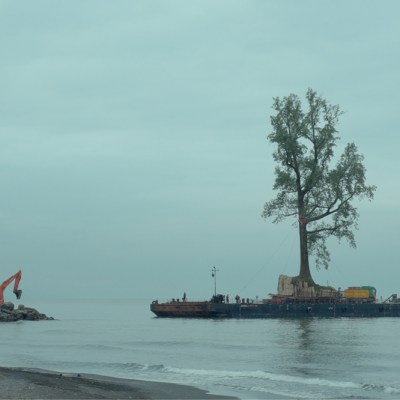In the newly restored Palazzo Vendramin Grimani hangs one of the most unusual baby pictures in history. The Fondazione dell’Albero d’Oro, named after the branches of the Vendramin Grimani family that lived in the palazzo from the early 16th century until 1969, has taken it upon itself to scour the world’s museums and private collections for artworks once owned by the family, as well as works otherwise ‘rarely, or never, able to be enjoyed by the public’. Its first offering in that latter category is the recently rediscovered Ritratto di bambina, a painting of c. 1770 from a private Venetian collection by Lorenzo Tiepolo – no, not that Tiepolo, i.e. Giambattista, the Venetian painter par excellence, but rather one of his sons. And not the more famous eldest son, Giandomenico, but the younger one, whose reputation has long withered in his family’s expansive shadow .
Born in Venice in 1736, Lorenzo followed the whole family to Madrid when Giambattista was summoned there by Charles III to fresco the Royal Palace. That’s where the Vendramin Grimani curators think he made this unusual painting, in an enigmatic and slightly unsettling style that resonates with his father’s otherworldly Madrid-period Scherzi and Capricci, and anticipates Goya’s elegant yet sometimes inscrutable portraits of the children of Spanish aristocracy.
Ritratto di bambina (c. 1770), Lorenzo Tiepolo.

A smallish portrait that can’t be much larger than life-sized, the painting shows an unknown and not at all happy baby girl, who stares out with a troubled expression from an engraved wooden piece of furniture that looks, at first glance, like a fancy umbrella stand, but is actually a kind of aristocratic highchair. (The technical term is sedile a pozzetto, literally ‘cockpit chair’.) Her round eyes are enormous and her dilated pupils clearly reflect the painter’s light source to the top left. Round golden earrings, each decorated with a small pendant, hang from her diminutive ears, which are largely hidden behind her white bonnet; somehow they’re made more fleshy and warm by the sketchiness of the brush used to paint them. A sumptuous pink bow blooms from her right arm, and a Prussian blue swaddling cloth spills out from the high chair; the luscious fabric and trademark Tiepolo colours are the painting’s most obvious link to the family style. The chubby fingers of the girl’s right hand grip a piece of red coral, which is attached to a slender chain from which hangs a rabbit’s foot – a good luck charm – and a silver rattle. Popping out from her high chair, the baby could be mistaken for a human jack-in-the-box.
The portrait is closely framed and bracingly frontal; hanging almost alone in the small Sala del Doge, over red silk, it might be confused for a religious portrait or even an icon. (Unfortunately, though, you’re not allowed much time to adore it, since the only way you can visit the Palazzo is on an impressively informative but nonetheless lock-step guided tour.) The child’s bright white clothing and her firm gaze initially hold your attention; it takes a moment to clock the grotesque mask carved on to the front of the high chair, from which ornamental garlands hang, and the powerful griffon’s feet at the chair’s base – which give the impression of being flexed and taut. The mask is another connection to the work of Tiepolo père, who painted similar masks on the golden bed in his Danae and Jove, now in Stockholm, and the footstool Mary stands on in his Education of the Virgin at the church of Santa Maria della Fava in Venice, as the curators helpfully note in the micro-monograph the Foundation has published. They also suggest that the grotesque, as well as the various charms the baby holds, are meant to have an apotropaic function – for the actual child who held them and, by extension, for the painting itself: in an era of high infant mortality, the portrait would be less likely to document a happy childhood than to memorialise a daughter lost too soon.
That’s one reason the curators speculate that the little girl may be the artist’s daughter. Lorenzo married in 1773; when he died three years later, just three months before his 40th birthday, he was recorded as issueless; if he had had a child, it did not survive. With that in mind, the little girl in all white, with those splashes of colour – particularly the dark blue that points to the Virgin Mary – looks more like an angel, her round, vitreous eyes like soap bubbles in a painting from the century before.
More than 200 years later, we can’t be sure if Lorenzo was painting for love or for money; we can’t easily balance the concrete hereness of a living, burping baby and the semi-allegorical thereness of a commissioned subject, painted for a public. And even if the little girl enjoyed a long life, Lorenzo painted knowing that her portrait would live longer. The precarity of this young subject, and the ambiguity of its relationship with the painter, emphasise that a portrait always suggests some ghostly universality in its particularity. As much as a portrait is like life, it’s even more like death.
Ritratto di bambina by Lorenzo Tiepolo is at the Palazzo Vendramin Grimani, Venice, until 10 March.


